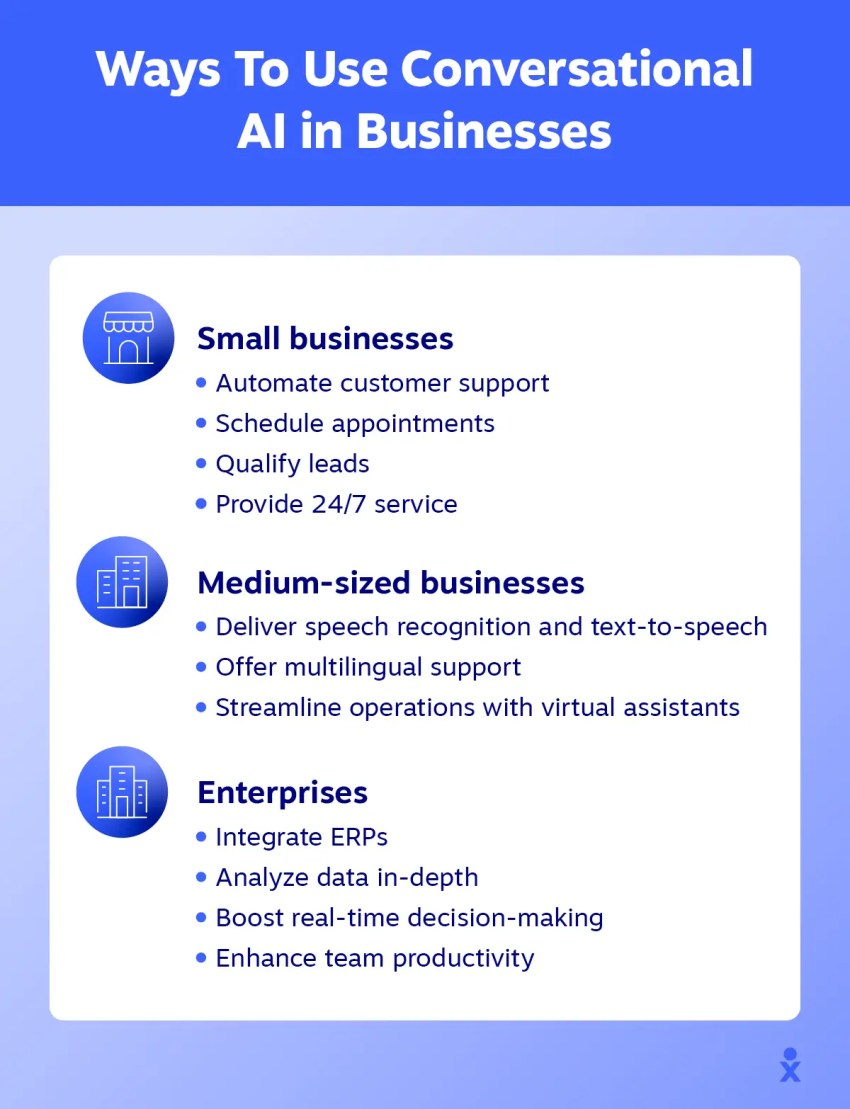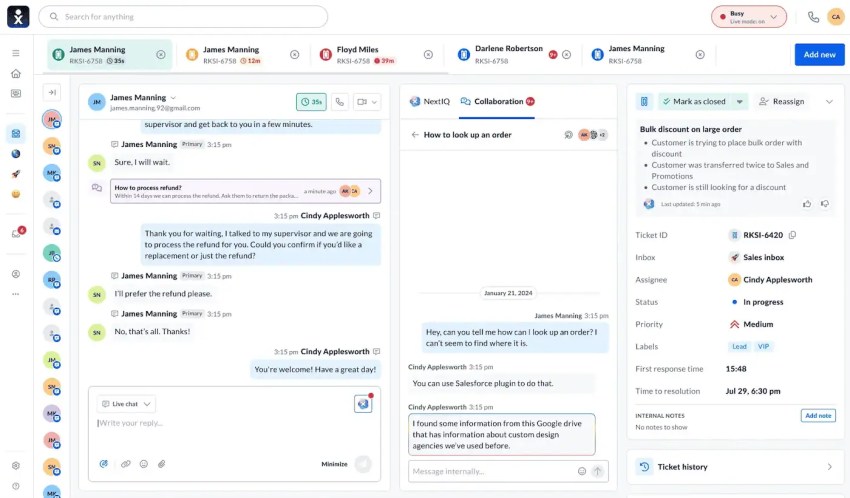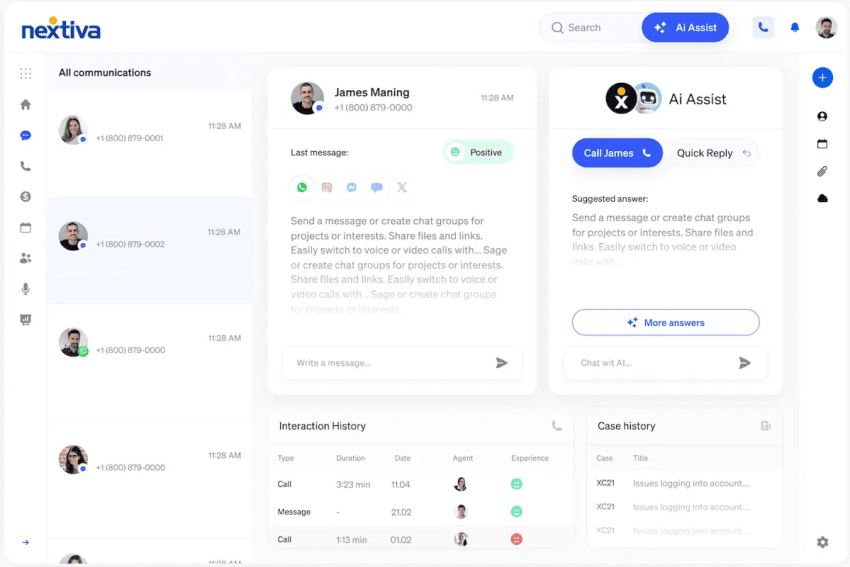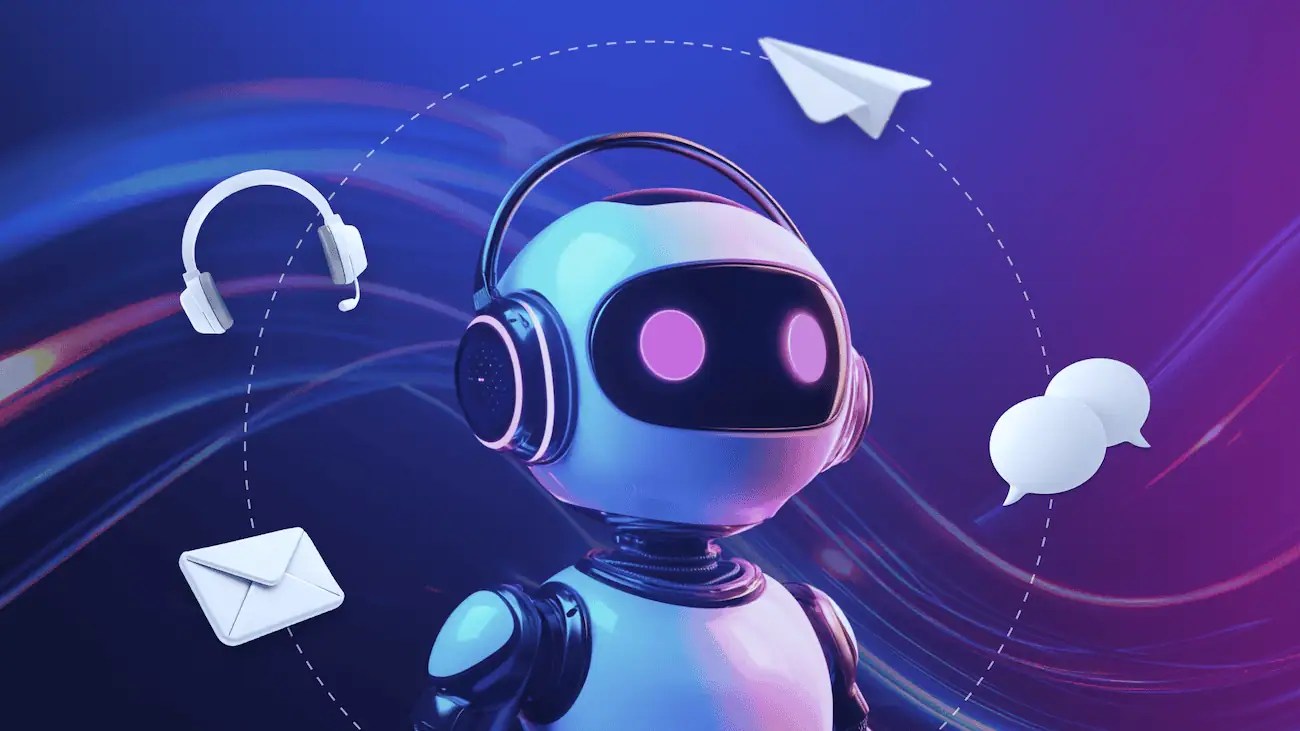We live and work in a world where artificial intelligence (AI) is becoming more prominent. For business leaders, it’s a challenge to work out exactly where it can help without causing disruption or requiring a major change in how you operate.
Virtual agent software is the answer to that challenge. It’s one of the most practical applications of AI, creating a positive, immediate impact on your business with a quick setup and a tangible return on investment. Let’s look at why virtual agent software is such an obvious choice for contact centers and how you can use it to improve your customer service.
What Is Virtual Agent Software?
Virtual agent software simulates human conversation to handle customer or employee interactions automatically. Using a collection of technologies, customer service providers can automate the first contact when customers reach out to their business.
Taking this a step further, smart virtual agents can fulfill entire interactions. For example, we’ve often referred to intelligent virtual agents (IVAs) as a software program that uses AI, natural language processing (NLP), and machine learning to provide automated and personalized assistance to users.
The main benefits of virtual agents are their ability to understand and respond to user requests, perform routine tasks, and make recommendations, simulating human interactions.
Note that these agents are different from another closely related acronym: the interactive voice response (IVR) system. An IVR system may provide self-service routing functionality, but it’s barely scratching the surface compared to virtual agent software. You may also hear IVAs referred to as intelligent virtual assistants. Depending on the scenario, these can be the same thing. Make sure you dig deep when evaluating products.

Key characteristics of virtual agent software
As well as handling basic call routing and identity and verification processes, virtual agent software can do the following when enabled:
- Use NLP to understand customer intent, sentiment, and context.
- Learn over time via machine learning models.
- Provide real-time, contextually relevant responses.
- Integrate with contact center systems, CRMs, and knowledge bases.

Why it matters now
Over the past decade, customers’ expectations have evolved. Thanks in part to technological evolution, the requirement for immediate, always-on customer support is rife in almost every industry. After all, if you can get automated assistance in your consumer life, why shouldn’t you expect it in your business life?
Take a request for a refund from Amazon. Often, you’ve received your money back in the time it used to take to wait in line for a customer service agent.
There’s also the internal business need to look after your staff. After years of being treated poorly and being expected to answer every call with a smile, agent burnout is finally getting the attention it needs. The more menial and repetitive tasks you can automate in the call center, the more productive, efficient, and happy your agents will be.
Agent burnout may have been the case for several years in your organization. Recognizing that positive employee experience correlates with positive customer experience is not new. However, we are now in a place where AI maturity and accessibility through cloud platforms are there for the taking.

Core Functions and Capabilities
Here are some key capabilities of virtual agent software:
Conversational AI
Conversational AI is when virtual agents engage in two-way, natural dialogue — recognizing intent rather than keywords. We’re no longer talking about limited yes/no conversations and directional transactions. Instead, AI helps out with the full conversation:
- Contextual responses that adjust mid-conversation
- Voice and text support for omnichannel experiences
- Emotional tone detection and sentiment tracking

Workflow automation
When it comes to contact center automation, there’s a plethora of tasks ripe for improvement. Instead of leaning on live agents to complete these manual tasks, enable virtual agents to look after the following:
- Order tracking
- Appointment scheduling
- Password resets
- Balance checks
Removing these activities from an agent’s workload means they have more time to spend on empathetic tasks and technical troubleshooting. They’re no longer fighting incoming calls or constantly trying to end their current call.
What’s more, when these repetitive tasks are completed by virtual agent solutions, they trigger automated next steps in back-end processes:
- CRM updates
- Ticket creation
- Scheduled callbacks

Personalization and learning
Every time virtual agent software interacts with a customer, it’s learning how your customers respond, which queries are most common, and what changes can be implemented in real time to improve accuracy and empathy.
Outside of those queries, it uses CRM and interaction history to tailor answers. Just like a human agent, virtual agents get better the more they’re exposed to real-life queries. The more information you give them access to, the faster and better they learn.
Take the AI Maturity Assessment
In just 5 minutes, get your personalized score and recommendations to move forward with AI.
Omnichannel support
Virtual agents can handle all communication channels without burning out. They may not have eyes or ears, but they can process mass queries across web chat, SMS, social media, email, and phone calls.
No transaction gets treated as a one-off matter. Every virtual agent maintains conversation continuity across devices and digital channels, allowing your contact center to become omnichannel without needing to upskill agents or hire channel-specific staff.

Self-service capabilities
Customers love it when they don’t have to queue for an agent. Plus, it’s not even the agent they’re waiting for — it’s the outcome.
Nobody is waiting to speak to their favorite contact. Everybody is calling to resolve their problem.
Using virtual agents enables customers to resolve common issues without waiting for an agent. As a result, you reduce average handle time and improve first contact resolution, hitting your key performance indicators and delighting customers.
How Virtual Agents Differ From Chatbots
You won’t be the first to wonder how virtual agents are different from chatbots. This is the most critical distinction for a buyer to understand. While they look similar on the surface, choosing the wrong one can lead to customer frustration and wasted investment.
A chatbot is a simple, rules-based program. A virtual agent is a sophisticated, AI-powered business tool. Here’s a breakdown of the key differences:
| Feature | Chatbots | Virtual Agents |
|---|---|---|
| Context and Comprehension | Follow static scripts. | Dynamically interpret meaning using NLP. |
| Task Complexity | Handle FAQs. | Process transactions, troubleshoot complex issues, and make recommendations. |
| Integration Depth | Operate at the surface level. | Integrate into CRMs, ERPs, and contact center systems for a full data context. |
| Escalation Intelligence | Handoff capabilities are limited. | Automatically transfer conversations to a human agent with complete context. |
Common Use Cases for Virtual Agent Software
Below are some key use cases of virtual agent software:
Customer service automation
When you’re experiencing a high call volume and your agents feel like the world is closing in on them, they’ll be delighted when you tell them there’s no need for them to handle the mundane customer inquiries that eat into their day and bring them zero job satisfaction.
Virtual agent software competently looks after:
- Basic account questions
- Order status checks
- Password resets
- Routing of complex cases to the right department with all relevant details
Sales and lead qualification
It’s not just customer service where virtual agent software excels. When a prospect or customer makes contact via your website, the software can capture and handle queries via forms or online chat. If you allow it to, the virtual agent software can even qualify the first steps of that query, set up appointments for sales reps, and provide links to relevant product information.
Sure, adding live chat to your website is a good first step. But what if you programmed it to ask qualifying questions and route hot leads to sales reps instantly?
The more you empower your virtual agents, the more you get out of them.
IT and HR support
What if you could use virtual agents for internal use, too? If you accept the premise that you can improve customer service by automating routine inquiries, you can also roll it out inside your business.
Automate IT and HR tasks like password resets, onboarding questions, and policy lookups for internal teams to gain the same benefits as your contact center agents. End users will be just as pleased that they no longer have to raise tickets and wait for humans to fulfill basic queries.
Customer feedback and surveys
Call center features have evolved to more than phone call-based functionality. Every time you interact with a customer, your virtual agent can automatically collect CSAT/NPS responses directly afterward.
Once upon a time, this data collection required a dedicated resource when verification handlers and quality managers called customers back to rate previous customer interactions on a scale of 1–10. Today, you can lean on sentiment analysis and automated customer surveys where a customer uses their keypad to give optional feedback.

Top 5 Virtual Agent Software for Business Communications
The best virtual agent software depends on your company’s ecosystem. The market is primarily divided into two types of solutions:
- All-in-one platforms (like Nextiva): Where the virtual agent is natively built into the same platform as your business phone system (UCaaS) and contact center (contact center as a service [CCaaS]). This allows the AI to work seamlessly with your human agents and customer data.
- Add-on or “niche” tools: These are virtual agents designed to plug into other systems. They’re specialized for one function (like sales or ticketing) or one platform (like Zendesk).
Here are five top examples across these categories:
1. Nextiva

As part of Nextiva’s Contact Center and UCaaS platform, you get virtual agents that handle voice, chat, social media, email, and SMS in one workspace. It also integrates with internal CRM data and triggers next steps like appointment booking and callbacks.
You get IVAs managing routine inquiries like opening times and balance checks, while human agents can spend time on more complex matters across any channel.
Key features:
- AI-powered voice and chat virtual agents
- Context-aware routing with seamless human handoff
- Real-time transcription, summaries, and sentiment analysis
- Self-service menus and task automation within one platform
Best for: Businesses seeking a scalable, all-in-one AI solution that improves both agent productivity and customer satisfaction.
2. Dialpad

While providing a full CCaaS suite for a number of years, Dialpad’s focus has always been on sales efficiency and the automation of key processes within that workflow.
For example, when a prospect returns a call, agents expect full interaction history, guidelines around preferences, and not having to complete any mid- or post-call note-taking. Instead, everything gets automated, and the sales rep can focus on what they do best.
Key features:
- Real-time call transcription
- Post-call summaries
- AI in-call coaching
- Built-in virtual agents
Best for: Sales and support teams needing deep, real-time insights.
3. RingCentral

As part of its RingCX customer service platform, RingCentral is set to provide an IVA service that handles basic inquiries, allowing human agents to be more efficient in other areas.
While there is no set date on the RingCentral website (as of October 2025), it’s expected to be rolled out sooner rather than later to compete with alternative providers.
Key features:
- A virtual agent built into RingCX.
- Routine query handling.
- Intelligent call routing.
- 24/7 assistance.
Best for: Companies already using RingCentral’s UCaaS ecosystem.
4. Zendesk

If you’re already using Zendesk for ticketing, it’s only natural to expect some type of virtual agent service here. Zendesk provides a built-in option for automating routine inquiries and handling more complex customer service queries.
As part of its core offering, you get AI Agents Essential included in all plans. If you upgrade to AI Agents Advanced, you get access to further features like hybrid workflows, API access, and advanced analytics.
Key features:
- Multilingual conversational AI
- Intent recognition
- Escalation to human agents through its support ticketing suite
Best for: Support teams that rely heavily on Zendesk’s help desk infrastructure.
5. Talkdesk

Talkdesk is another CCaaS provider that offers a virtual agent embedded into its core offering. Here, you get access to an agent that serves customers across several channels and integrates with internal knowledge bases.
At a more advanced level (and possibly needing enhanced access), you can build and streamline workflows and custom configurations to move away from default yes/no answers.
Key features:
- AI-driven virtual agent
- Low- or no-code builder for automated workflows
- Advanced analytics specific to virtual agents
Best for: Large enterprises requiring customizable automation.
What’s the Future of Virtual Agent Software?
Customer service automation is here to stay. In fact, the global AI for customer service market is projected to grow at a 25.8% compound annual growth rate between 2024 and 2030.
But what does that mean for the applied usage of virtual agent software?
- AI will shift from reactive to predictive, anticipating customer needs.
- Multimodal virtual agents (text + voice + visual) will become standard.
- Deep learning models will continuously improve accuracy and empathy.
- Virtual agents will evolve into full digital coworkers, collaborating with human agents in real time.
The takeaway is clear: The future of virtual agent software is imperative to the success of any contact center operation.
Nextiva’s Virtual Agent Leads the Way
Virtual agents are redefining customer communication, turning routine interactions into fast, personalized experiences.
But as this guide shows, the power of AI isn’t just in the automation itself but in the integration. The right contact center platform connects automation, AI, and human context into one seamless flow.
That is exactly what Nextiva delivers.
Nextiva integrates virtual agents directly into a unified UCaaS and contact center platform, ensuring your AI, human agents, and customer data all work from a single source of truth. This integration allows you to:
- Support human agents: AI handles the simple questions, freeing up your team for high-value, complex issues.
- Create smooth handoffs: Customers never have to repeat themselves. The virtual agent passes the full context of the conversation to the human agent instantly.
- Improve continuously: Every interaction is analyzed, providing insights for quality management and ensuring your AI and human agents are always providing the best possible service.
Ready to empower human agents with a virtual sidekick? Check out Nextiva’s Intelligent Virtual Agents. 👇

















 Customer Experience
Customer Experience 









